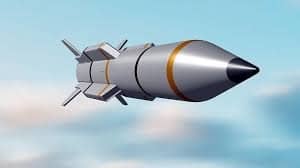
By Bharat Global Time Staff | May 25, 2025
New Delhi: In a major leap forward for India’s defense capabilities, the Defence Research and Development Organisation (DRDO) has quietly tested a brand-new missile system named STAR—short for Supersonic Tactical Advanced Response. Early reports suggest that this next-generation missile may be even more powerful and advanced than the iconic BrahMos, long considered India’s pride in the realm of precision-strike weapons.
Details remain limited due to the strategic sensitivity of the project, but defense officials familiar with the development say STAR is not just a missile — it’s a message.
“STAR is a clear demonstration of India’s growing technological confidence. We’re no longer catching up — we’re leading in several areas,” said a senior DRDO official on condition of anonymity.
What Makes STAR Different?
Sources suggest that STAR has an operational range of over 800 kilometers and can fly at speeds beyond Mach 4, placing it in the elite club of high-velocity tactical missiles. It reportedly features AI-driven guidance, allowing real-time target tracking and adjustments mid-flight—an upgrade even the BrahMos doesn’t currently offer.
In addition to conventional payloads, STAR is said to support smart warheads—capable of selective strikes based on target movement or terrain changes.
The missile is also designed to be platform-flexible, meaning it can be launched from land vehicles, aircraft, warships, and submarines alike—greatly increasing India’s strike options in various terrains and combat situations.
100% Indigenous. 100% Strategic.
Unlike the BrahMos, which is a joint venture between India and Russia, STAR is believed to be completely indigenous, a direct product of the ‘Make in India’ and ‘Atmanirbhar Bharat’ initiatives in the defense sector. This makes it not only a technological win but also a strategic and symbolic one.
“This is about autonomy. STAR represents India’s ability to develop cutting-edge systems without foreign dependency,” said defense analyst Captain Rahul Pandey (Retd).
How the World Is Reacting
While New Delhi has been tight-lipped about the specifics, news of STAR’s successful test has quietly made waves in global defense circles. Some international analysts have called it a “geopolitical shockwave”, especially in the context of rising regional tensions in the Indo-Pacific.
China and Pakistan have not officially responded, but strategic think tanks in both countries are reportedly assessing what STAR could mean for the balance of power in South Asia.
“If India begins deploying STAR widely, it changes tactical equations across its entire northern and eastern front,” said Maya Kent, a military technology expert at the International Security Forum.
What’s Next?
India has not yet announced formal induction plans or export intentions, but the defense ministry is expected to release a detailed statement soon. Given the missile’s capabilities and indigenous design, experts believe it may become a centerpiece of India’s future strike doctrine.
Key Highlights:
- DRDO unveils STAR, an advanced supersonic tactical missile
- Range: Estimated 800+ km | Speed: Over Mach 4
- AI-guided, multi-platform compatible, and 100% made in India
- Seen as a major step ahead of BrahMos
- Global experts say it may reshape regional defense dynamics
Editor’s Note: India’s growing defense innovation isn’t just about weaponry—it’s about vision. As DRDO continues to push the envelope, STAR may well become a symbol of India’s arrival as a self-reliant technological power on the global stage.





